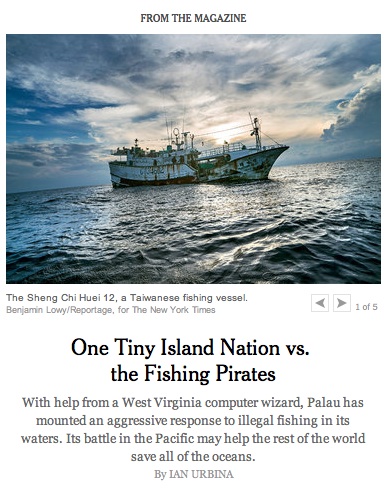The week that was, February 14-20, 2016
Posted on | February 21, 2016 | No Comments
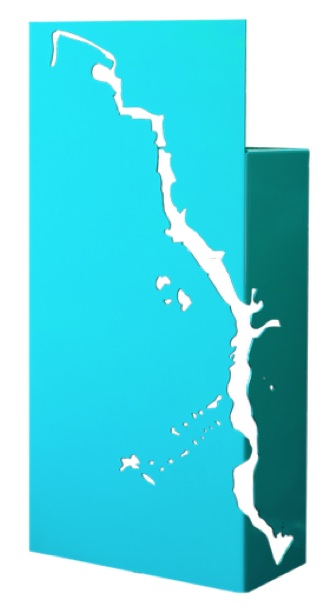
Gavin Younge’s folded metal sculptures, such as this rendering of De Hoop Vlei, a nature reserve and wetland, study water bodies impacted by climate change in South Africa. They are part of the show “Water Matters” at IS Art Gallery at 11 Huguenot Street, Franschhoek, South Africa, until February 29. Click on the image to be taken to the catalogue.
These outlines, delineated by topographic contour lines, have been removed from the plate steel and exist as absences – metonyms for desire, as in most cases these dams are never full. — Sculptures highlight drought and ‘Water Matters,’ Cape Times, 2/17/16
Watch the video all you like. But if you live in Boston please don’t try it yourself — it could prove dangerous (and we’ve had enough snow already). — What happens when boiling water meets freezing cold air?, Boston Globe, 2/17/16
Oily black liquid is coming out of residential faucets in the rural Texas town of Crystal City, and no one is sure who to alert … — ‘Black sludge’ pours out of Texas town’s faucet days after FBI arrests nearly every city official, Think Progress, 2/19/16
“It’s the wave of the future.” — Maryland Secretary of the Environment Ben Grumbles on nutrient trading in which polluters pay other polluters to stop polluting instead of stopping polluting themselves, Midday, WYPR, 2/17/16
“At a very basic level this is an urban sprawl issue masquerading as a drinking water problem …” –Cory Mason, Racine representative on the Great Lakes Regional Body, Public hearing on historic application to tap Lake Michigan’s Drinking Water, CBS 58, 2/18/16
Tom Graff won, that the State has embraced water transfer-based water marketing without regard for third party impacts, including the effect of such water transfers on public trust resources – endangered species or any other public trust responsibilities. — Comment by former Department of Fish & Game biologist Bill Keir, Applying my three questions to existing water markets, On the Public Record, 2/16/16
… the [Colorado River Research Group] report is a reminder that the environment is the ultimate junior. — JFleck at Instain, 2/18/16
The average American uses 150 gallons of water a day … the Navajo Nation people average 7 gallons a day. — Thirst Aid, Southwest: The Magazine, February 2016
What once drew a shrug is now cause for celebration. — Here’s what El Nino’s storms meant for Lake Mead’s water levels, Las Vegas Review-Journal, 2/17/16
There is no indication where that money might come from… Storm water, long a nuisance, may be a parched California’s salvation, New York Times, 2/19/16
… there are still tantalizing signs of a potential shift to much wetter conditions by the very end of the month. — Recent record warmth to be interrupted by Wednesday storm; long-term prospects mixed, California Weather Blog, 2/16/16
We will remain vigilant. — Lester ousted as Chief of Coastal Commission, Heal the Bay blog, no posting date, via 2/18/16 newsletter
… ensuring the state’s future water supply is more important than funding highway projects. — Utah Sen. Stuart Adams, Proposal to divert funds to help fund Lake Powell pipeline, KUTV, 2/15/16
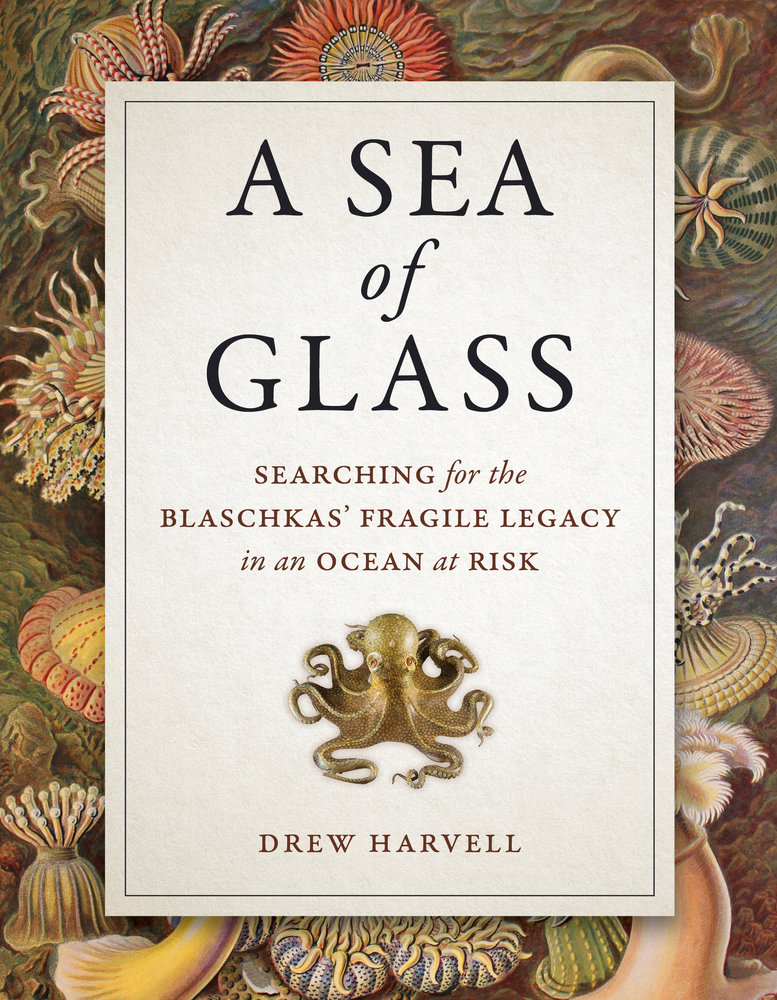
Click on the octopus to learn about Drew Harvell’s book, “A Sea of Glass,” which will be published in March by UC Press.
“Alaska is where the action is now.” — Cornell University ecologist Drew Harvell, Scientists find out what killed millions of starfish, Yahoo News, 2/19/16
“The land can only hold so much water. The expectation is this additional soaking up of water is not going to last forever.” — Jet Propulsion Laboratory glaciologist Alex Gardner, Thirsty continents are slowing down expected sea level rise, Los Angeles Times, 2/15/16
“… it was, I would say, absurdly warm across the entire Arctic Ocean.” — Mark Serreze, director, National Snow and Ice Data Center, Scientists are floored by what’s happening in the Arctic right now, Washington Post, 2/18/16
Forget those dreamy underwater documentaries where all is peace and quiet. The ocean is like New York City at rush hour. There are thousands of species, and many have something to say. The tiny cusk eel sounds like a jackhammer. Damselfish purr. Long-horned sculpins hum like an iPhone set on “buzz.” — Fish that make sound, The Blue View by John Racanelli, WYPR, 2/16/16
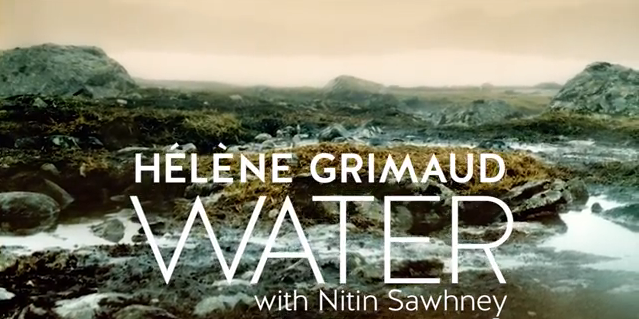
Pianist Helene Grimaud will be performing at the Detroit Symphony Feb. 25-26. Click on the image to be taken to a YouTube trailer for her new album “Water.”
“… it’s a musical exploration but hopefully also an artistic invitation to a prise de conscience …” — pianist Helen Grimaud, ‘Water’ is a metaphor and motivation, All things considered, NPR, 2/16/16
Another case being closely watched is the challenge to EPA’s Clean Water Rule that seeks to “clarify” the jurisdictional scope of the Clean Water Act … — What Scalia’s death means for environment and climate, The Conversation, 2/18/16
One state analysis, covering 67 counties, found the list includes 21,642 miles of streams — and omits 28,760. — Minnesota’s buffer law triggers a new debate: Which waters are covered?, Minneapolis Star Tribune, 2/14/16
Alive, an individual shark is worth more than $170,000 annually in tourism dollars … Dead, each can go for a hundred dollars … – Palau v. the Poachers, New York Times Magazine, 2/17/2016
There is good reason to believe there are multiple populations of landlocked Chinook salmon completing their entire life cycle above Central Valley dams. — What lies behind the dam? California Water Blog, 2/14/16
… two-thirds of the global population live under conditions of severe water scarcity at least 1 month of the year. — Four billion people facing severe water scarcity, Science Advances, 2/12/16
Four billion facing severe water scarcity? I think not. — Economist David Zetland, Aguanomics, 2/19/20
S“… it’s a dining experience that goes with the history of the building.” — restaurant landlord Lee Godburn, Bread & Water only the start at new restaurant in old jail, Hartford Courant, 2/15/16
“Dalits not being allowed water from the well is a tradition which come from generations. We are all simply following this tradition.” — official in an Uttar Pradesh village, Banished for taking water, India Today, 2/15/16
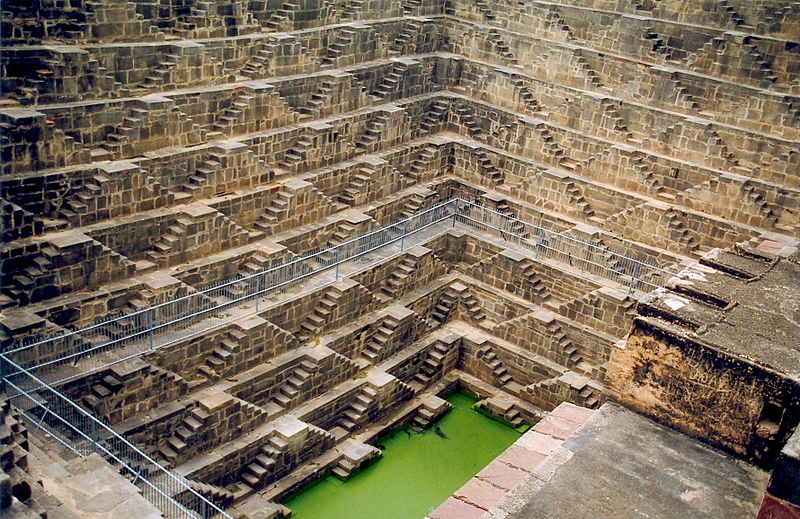
Click on the image to learn more about the Chand Baori stepwell near Jaipur in the Indian state of Rajasthan. Photo: Doron/Wikipedia
” … you drive around in circles, sometimes for days, but eventually you’ll find a stepwell. Sometimes it’s unbelievably fantastic, sometimes you end up getting dropped off at a pit, with water in it.” — Photographer Victoria Lautman, Up the down staircase and into India’s ancient wells, CNN.com, 2/14/16
.. villagers are experimenting with ways to “harvest” the fog from the air and turn it back into water. — Yemenis battle water shortage, Al Bawaba, 2/14/16
Hat tip to Melina Watts for the stepwell link, Maven’s Notebook for the California Weather Blog link, Ilsa Setziol for the starfish link, Michael Campana for the Southwest Navajo story, Judith Lewis Mernit for the WaPo Arctic item and Tim Wheeler for Scalia in The Conversation (all on Facebook) and to John Walker of the Great Basin Water Network via e-mail for the KUTV and Review-Journal links.
Comments
Leave a Reply
